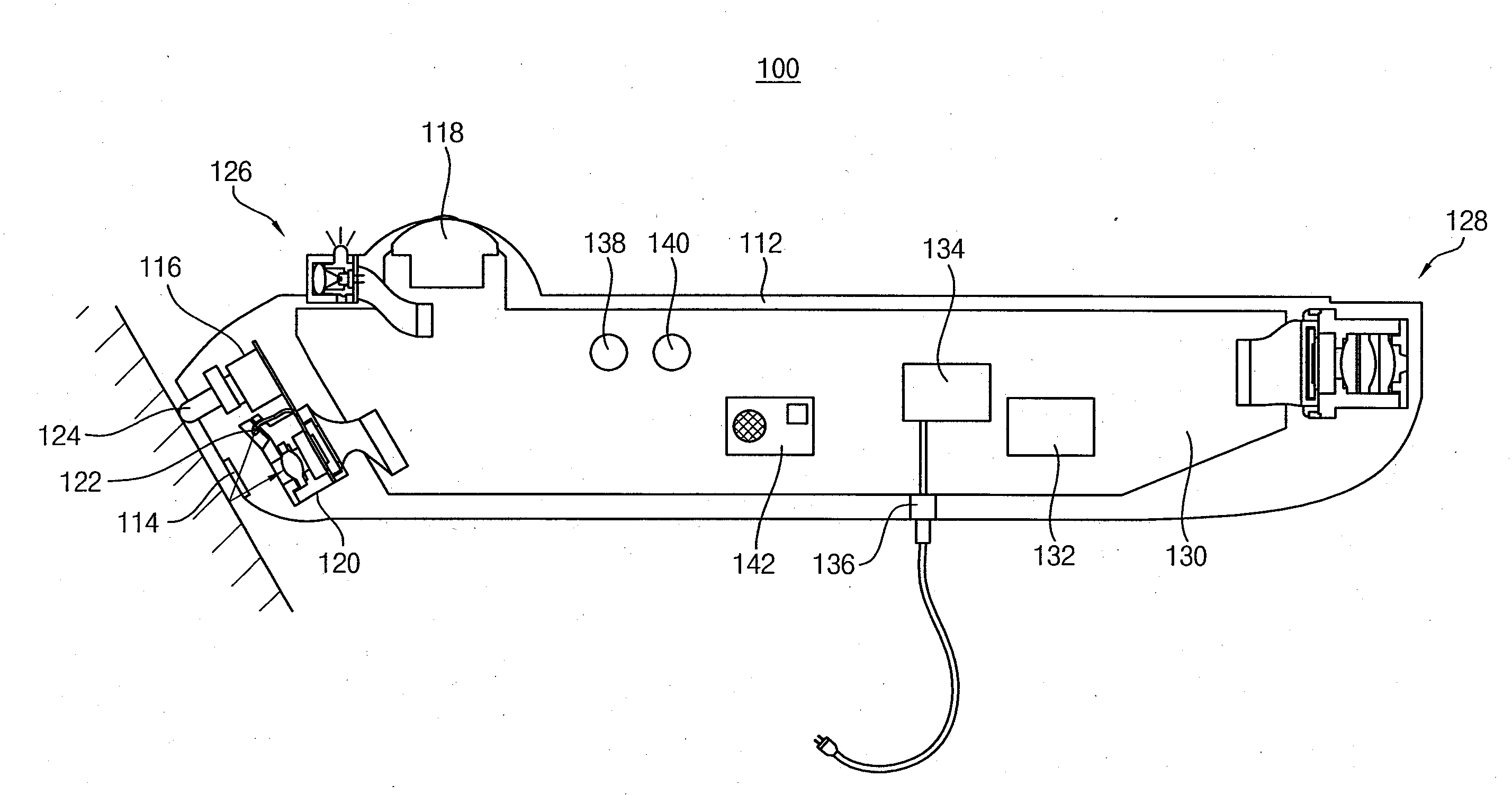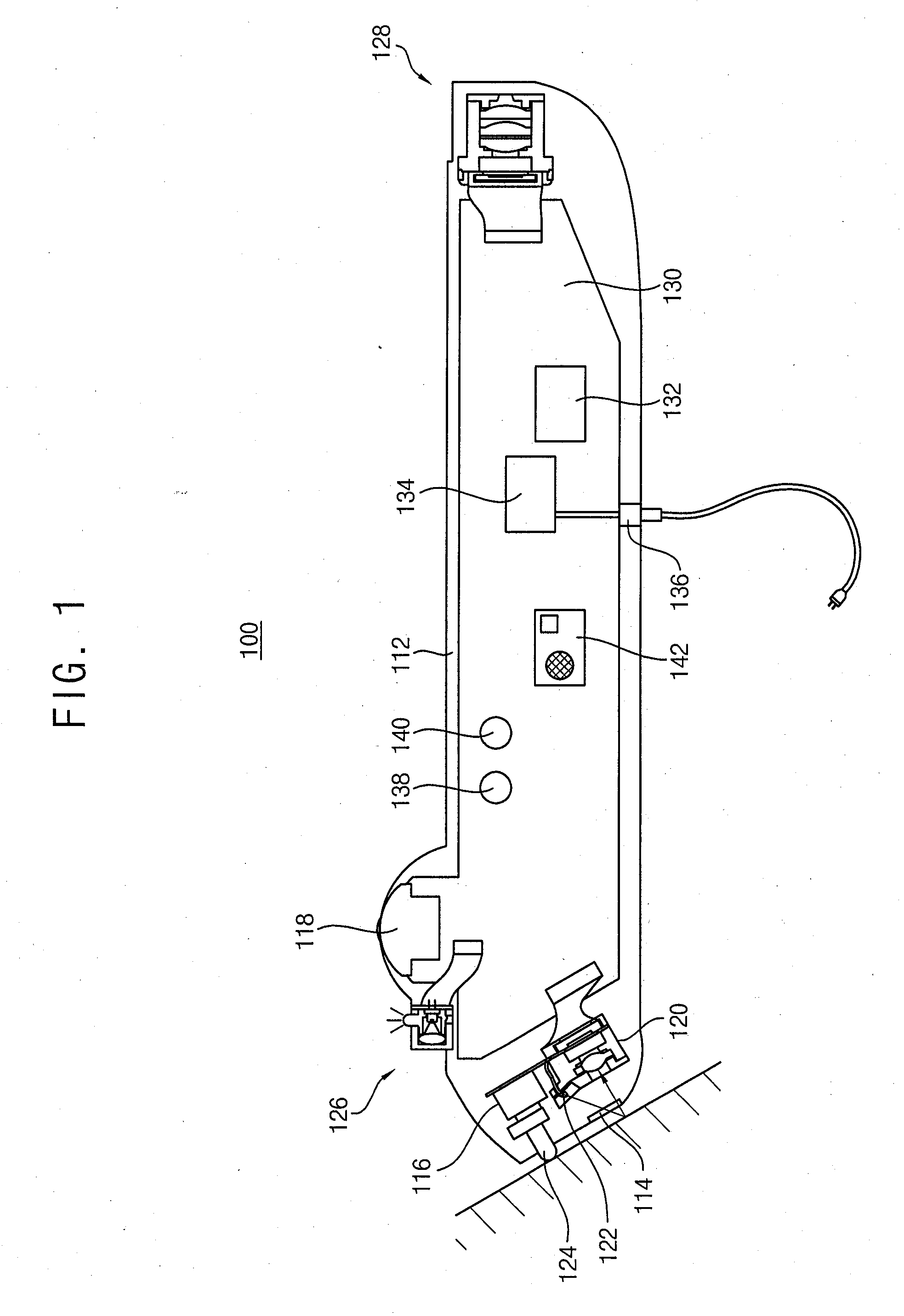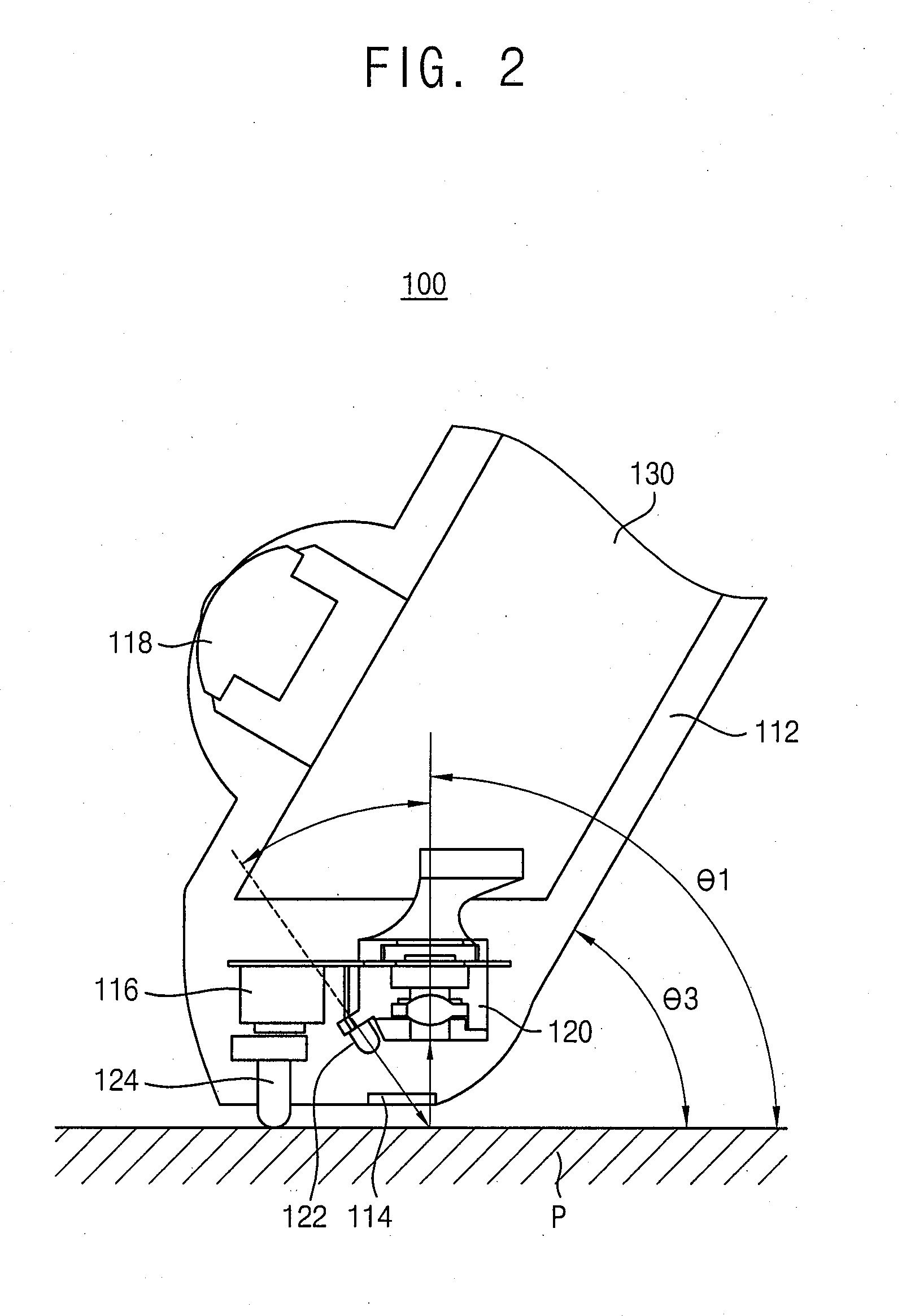Optical Coordinates Input Apparatus, Optical Sensor Module and Method For Assembling Thereof
a technology of optical sensor and input apparatus, which is applied in the direction of static indicating devices, instruments, solid-state devices, etc., can solve the problems of difficult reduction of volume and size of conventional optical mouse, inability to accurately detect the motion of ball mouse sensors, and large space requirements of optical mouse structures, etc., to achieve remarkably short light path, reduce light loss, and low cost
- Summary
- Abstract
- Description
- Claims
- Application Information
AI Technical Summary
Benefits of technology
Problems solved by technology
Method used
Image
Examples
embodiment 1
Locking Structure Between a Lens Holder and a Module Substrate
[0071]FIG. 3 is a plan view illustrating an optical sensor module according to a first example embodiment of the present invention. FIG. 4 is a cross-sectional view taken along a line I-I′ shown in FIG. 3, and FIG. 5 is a bottom view illustrating the optical sensor module shown in FIG. 3.
[0072]Referring to FIGS. 3 to 5, the optical sensor module 200 of the present example embodiment includes a substrate unit and a lens unit. The lens unit includes a lens holder 210, a lens 216 and a light source 290. The substrate unit includes a module substrate and an image sensor chip 260. The module substrate includes a rigid substrate 250 and a flexible substrate 252.
[0073]The rigid substrate 250 has a rectangular outer wall that is approximately the same shape as the rectangular shape of the lens holder 210. A plurality of fixation holes 250a is formed at every corner of the rigid substrate 250, and a plurality of alignment holes 25...
embodiment 2
Locking Structure Between a Lens Holder and a Module Substrate—Switch Type
[0082]FIG. 6 is a plan view illustrating an optical sensor module according to a second example embodiment of the present invention, and FIG. 7 is a cross-sectional view taken along the line II-II′ of FIG. 6. The optical sensor module in Embodiment 2 is the same as in Embodiment 1 except that the receiving unit of a rigid substrate 350 includes an extension portion 350c and a switch 354 is positioned on the extension portion 350c, and the image sensor chip is mounted on the rigid substrate not by a flip-chip process but by a wire bonding process. The extension portion 350c is extended from the rigid substrate 350 beyond an edge line of the lens holder. In the present embodiment, the remaining elements are substantially the same as those in Embodiment 1, and thus the detailed descriptions of the same elements will be omitted.
embodiment 3
Thermal Bonding Structure Between a Lens Holder and a Module Substrate
[0083]FIG. 8 is a plan view illustrating an optical sensor module according to a third example embodiment of the present invention, and FIG. 9 is a cross-sectional view taken along the line III-III′ of FIG. 8. FIG. 10 is an exploded perspective view illustrating the optical sensor module shown in FIG. 8.
[0084]Referring to FIGS. 8 to 10, the optical sensor module 400 in Embodiment 3 includes a lens holder 410, a rigid substrate 450, a flexible substrate 452 and a light source 490.
[0085]As an example embodiment, the lens holder 410 is formed into a two-stepped tower structure through an injection molding process, so that the receiving unit 412 is formed simultaneously with the barrel 414 as one body. A bottom surface of the receiving unit 412 includes a reference face 412a. The reference face 412a is substantially horizontal with respect to an optical axis 402, and makes contact with a top surface 450a of an edge po...
PUM
 Login to View More
Login to View More Abstract
Description
Claims
Application Information
 Login to View More
Login to View More - R&D
- Intellectual Property
- Life Sciences
- Materials
- Tech Scout
- Unparalleled Data Quality
- Higher Quality Content
- 60% Fewer Hallucinations
Browse by: Latest US Patents, China's latest patents, Technical Efficacy Thesaurus, Application Domain, Technology Topic, Popular Technical Reports.
© 2025 PatSnap. All rights reserved.Legal|Privacy policy|Modern Slavery Act Transparency Statement|Sitemap|About US| Contact US: help@patsnap.com



